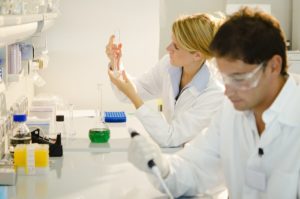Impact Of Regenerative Medicine
 Regenerative medicine has the potential to revolutionize disease treatment. It can be used to treat congenital abnormalities such as corneal adenoma and thalassaemia. This technology uses gene transfection to enhance the properties of cells in a tightly controlled process. This technology may one day replace whole organs or even parts of the body. Get more informations of Indianapolis regenerative medicine
Regenerative medicine has the potential to revolutionize disease treatment. It can be used to treat congenital abnormalities such as corneal adenoma and thalassaemia. This technology uses gene transfection to enhance the properties of cells in a tightly controlled process. This technology may one day replace whole organs or even parts of the body. Get more informations of Indianapolis regenerative medicine
Regenerative medicine is a relatively new field of multidisciplinary research involving the replacement and repair of human organs, tissues, and cells. The field has the potential to heal many conditions by restoring tissue and organ function. Scientists are also investigating regenerative medicine’s potential to grow tissues and organs in the laboratory. One in three Americans may be eligible for this type of treatment in the future.
The procedure typically requires an outpatient procedure and the most common side effects are bruising or a mild ache at the injection site. Aside from this, patients can return to their normal routines soon after undergoing the treatment. Because it is a minimally-invasive procedure, patients can take pain medications for a few days following the treatment.
Using stem cells has been used to treat a variety of conditions, including arthritis, cartilage, and ligaments. A recent study showed that patients who received stem cell treatment for osteoarthritis in the knee continued to improve five years after starting treatment. Because stem cells can be transformed into any type of cell, they have the potential to heal damaged tissues. In addition to repairing damaged tissues, stem cells can also regenerate cartilage and ligaments.
While it is still early in the field, regenerative medicine is becoming increasingly important in clinical practice. For example, regenerative medicine materials that release cytokines and growth factors can help with wound healing. These technologies could help improve patient outcomes and cure disease conditions in the future. These treatments may also be used to improve the lives of people with congenital defects.
One major barrier to regenerative medicine is the lack of an appropriate source of cells for the therapy. While there are numerous sources of therapeutic cells available, finding enough of these cells can be difficult. The most common cell types used in regenerative medicine are adult tissue-derived stem cells and progenitor cells. Although these two sources are similar, adult tissue-derived cells are the most widely used in clinical trials.
Stem cell therapy is an innovative technique that promotes the body’s natural healing response. It works by using cells instead of donor organs, which are limited in supply. Stem cells can be manipulated to specialize into specific types of cells and implanted into patients with disease. The resulting heart muscle cells are thought to contribute to the repair of injured heart muscle.
CONTACT INFO
QC Kinetix (Greenwood)
5510 S East St, Bldg A, Suite G
Indianapolis, IN 46227
(463) 235-7160